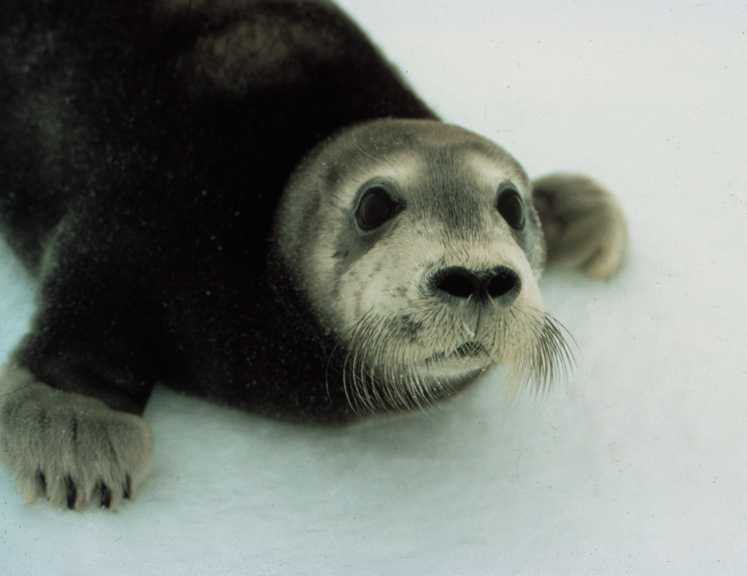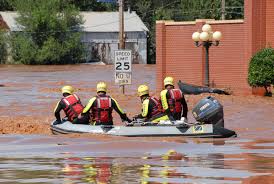Climate Adaptation
Thinking Globally, Acting Soldierly
Looking for people who care about climate change? Try the Pentagon.
Sometimes, it seems like the world is upside down: the head of EPA is a climate skeptic; the head of DOD takes climate change very seriously. But the view of the Secretary of Defense isn’t a fluke. There’s a liong list of Pentagon documents about the risks of climate change, going back over twenty years. …
Continue reading “Thinking Globally, Acting Soldierly”
CONTINUE READINGSome Resources for Non-Experts (and for Experts Too!) on the Executive Order Rolling Back Federal Climate Change Regulations
Cutting Through the Information Overload
The President’s Executive Order rolling back climate change-related initiatives, “Promoting Energy Independence and Economic Growth,” just came out today, and there’s already plenty of analysis to help people to understand its likely impact. While the short answer is that it is terrible for our country, the long answers tend to make people’s eyes glaze over if …
CONTINUE READINGThe Owls in the Vineyard
It’s smart to take precautions against climate change. More can be done, even in the Trump era.
At night, you can hear the hooting of owls in the vineyard. The owners have deployed owls and falcons to control the pests that threaten the Kendall Jackson vineyards due to milder winters. But birds of prey aren’t the only things flying above the vineyard. There are also drones, which are used to observe small differences …
Continue reading “The Owls in the Vineyard”
CONTINUE READINGGOP Mayor: “Let’s Talk About the Octopus in the Room”
An octopus in a parking garage? It’s a sign of the times.
Jim Cason, the GOP mayor of Coral Gables, Florida, wants us to talk about climate change: “‘We’re looking to a future where we’re going to be underwater, a great portion of South Florida,’” Cason said. ‘For all of us down here, this is really not a partisan issue. We see it. We see the octopus in …
Continue reading “GOP Mayor: “Let’s Talk About the Octopus in the Room””
CONTINUE READINGBe Thankful for Millennials – Our Best Environmental Hope
The present belongs to Trump. The future is a lot greener.
We may not have much to be thankful right now, but I do have one bright thought for Thanksgiving. These are dark days for the cause of environmental protection, and it would be easy to give way to despair. But I continue to believe that prospects will improve. This election was a huge and costly …
Continue reading “Be Thankful for Millennials – Our Best Environmental Hope”
CONTINUE READINGClimate Science Takes Win in Effort to Save Bearded Seal
Ninth Circuit upholds NMFS’s reliance on climate projections to 2095 in decision to list Pacific bearded seal as threatened under ESA
Climate change is expected to wipe out critical habitat of the Pacific bearded seal by 2095. This projection, based on IPCC climate data and models, justifies listing the Beringia distinct population segment of the bearded seal as threatened under the Endangered Species Act, according to a recent Ninth Circuit opinion in Alaska Oil and Gas …
Continue reading “Climate Science Takes Win in Effort to Save Bearded Seal”
CONTINUE READINGLet’s Get America Moving Again
Make infrastructure a top priority for the new Congress
There’s actually one policy that Clinton and Trump agree on: the need for a massive investment in infrastructure. However the election comes out, that should be a top legislative priority, combining economic, safety, and environmental benefits – and political benefits for the next President because of its popularity. It would help get the country moving …
Continue reading “Let’s Get America Moving Again”
CONTINUE READINGSurveying Climate Change Law
In only 25 years, a dynamic new field of law has taken root.
Climate Change Law, the first volume of Elgar’s Encyclopedia of Environmental Law has just appeared. There are a number of excellent edited collections about aspects of climate change law. What distinguishes this one is that breadth of the coverage, including both international and domestic aspects of carbon reduction and adaptation to climate change. The book confirms how quickly climate change …
Continue reading “Surveying Climate Change Law”
CONTINUE READINGCan Women’s Land Rights Combat Climate Change?
Suggestive Links Between Gender Equity and Sustainability
I suppose that the holy grail of environmentalism, and environmental scholarship, is integrating equity concerns with global priorities. The environmental justice movement has sought to do this, sometimes with success and sometimes less so. Now Jennifer Duncan of Landesa, one of the most innovative think tanks focusing on land rights and the Global South, thinks …
Continue reading “Can Women’s Land Rights Combat Climate Change?”
CONTINUE READINGLouisiana Flood Lessons for a Climate-Changed Future
Louisiana’s preparedness for a 1000-year flood, and implications of the slow media response for slow-onset climate impacts
The devastating floods in southern Louisiana a week ago left at least 13 people dead, tens of thousands in need of rescue, and 60,000 homes damaged. In one parish, nearly ninety percent of homes flooded. Cellular network failures, road closures, power outages, and sewage-contaminated floodwaters continue to threaten relief efforts. The American Red Cross is …
Continue reading “Louisiana Flood Lessons for a Climate-Changed Future”
CONTINUE READING












